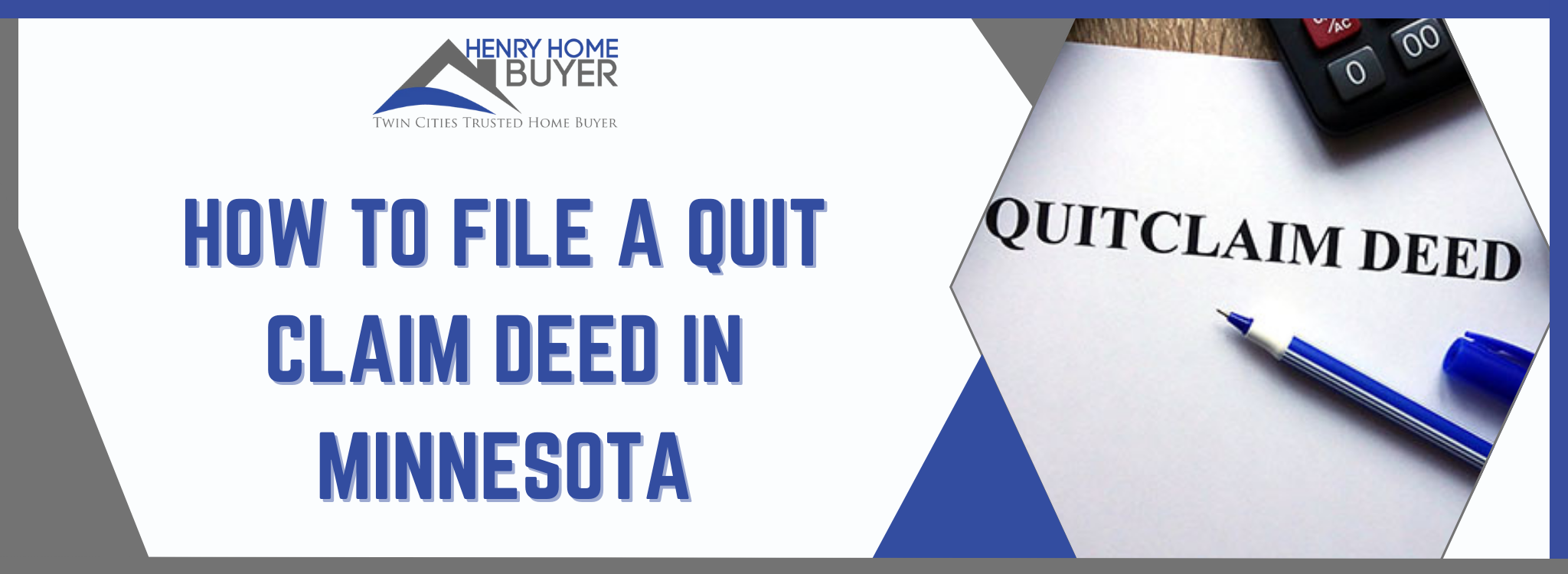
Preparing to File a Minnesota Quitclaim Deed Form
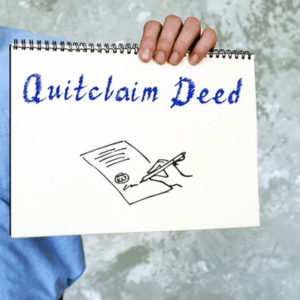
What are the requirements for a quitclaim deed in Minnesota?
To complete a quitclaim deed in Minnesota, you need to meet several requirements:
- Legal Description of Property: Ensure the property description is accurate.
- Grantor and Grantee Information: Include full names and addresses.
- Consideration Amount: State any consideration amount, even if it’s symbolic.
- Execution: The grantor must sign the deed in front of a notary public.
- Recording: Record the deed at the county recorder’s office where the property is located.
These steps comply with Minnesota quitclaim deed laws and ensure a smooth property transfer.
How do you gather the necessary information and documents for filing?
Gathering the right documents is key for filing a quitclaim deed in Minnesota:
- Current Property Deed: Have the existing deed ready.
- Identification: Collect ID documents for both parties.
- Tax Information: Include any related property tax details.
- Minnesota Land Transfer Documents: Prepare necessary legal documents.
- Compliance with Recording Rules: Follow all rules to prevent delays.
Being prepared simplifies the Minnesota property deed transfer process.
What role does legal counsel play in preparing quitclaim deeds?
In Minnesota, legal counsel can be beneficial for preparing quitclaim deeds:
- Expert Guidance: They provide advice on the procedure, ensuring the process complies with state laws.
- Document Review: An attorney can ensure all documents are correct.
- Avoiding Mistakes: Legal counsel helps identify and fix errors.
- Legal Representation: In case of disputes, having an attorney is helpful.
Consulting real estate legal help can improve the accuracy and efficiency of the process when dealing with a quitclaim deed in Minnesota.
Filing Process for a Minnesota Quitclaim Deed
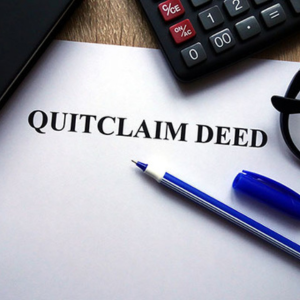
What steps are involved in filing a quitclaim deed in Minnesota?
Filing a quitclaim deed in Minnesota involves these steps:
- Preparation of the Deed: Make sure all legal descriptions and signatures are included.
- Notarization: Get the deed notarized.
- Payment of Taxes: Pay any required property transfer taxes.
- Submission to County Recorder: File the deed and pay any fees at the county recorder’s office.
Following these steps helps you file the quitclaim deed correctly.
Where should you submit the quitclaim deed form in Minnesota?
Submit the quitclaim deed form to the county recorder’s office in the county where the property is located. Check for specific submission guidelines and addresses at the Minnesota Deeds and Records Office.
How much does it cost to file a quitclaim deed in Minnesota?
Costs for filing a quitclaim deed in Minnesota vary by county. Typically, you will encounter:
- Filing Fees: Usually range from $50 to $100.
- Property Transfer Tax: This may vary based on property value.
Contact your local county recorder’s office for precise filing fees and applicable taxes.
Completing a Quitclaim Deed Form
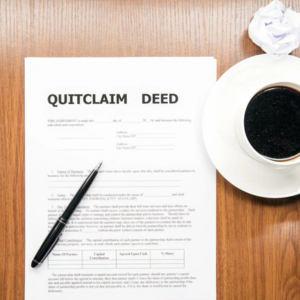
What is the correct way to fill out a Minnesota quitclaim deed form?
Filling out a Minnesota quitclaim deed form requires attention to detail:
- Complete Grantor and Grantee Information: Enter full legal names and addresses.
- Include the Property’s Legal Description: Match this to the current deed.
- Mention Consideration: Specify any consideration for the transfer.
- Sign and Notarize: The grantor signs in front of a notary public.
Using a Minnesota quitclaim deed template can help maintain accuracy.
How do you ensure the accuracy and completeness of the deed form?
Ensure the Minnesota quitclaim deed form is complete and accurate by:
- Reviewing Information: Double-check names, addresses, and legal descriptions.
- Following Formatting Guidelines: Adhere to Minnesota-specific requirements.
- Using a Checklist: Verify all sections are done correctly.
- Consulting Legal Counsel: Have the deed reviewed by an attorney if possible.
Accuracy ensures the validity of the quitclaim deed in Minnesota.
When do you need a notary for your quitclaim deed?
A notary is needed for signing the quitclaim deed in Minnesota. The notary confirms the grantor’s identity and witnesses the signature. This step is essential for the legal recording of the deed.
Common Issues with Minnesota Quitclaim Deed Filings
Quitclaim deeds are important for transferring property ownership. However, filing mistakes can cause legal problems. Knowing common errors and fixing them is vital for smooth transactions in Minnesota.
What errors should be avoided when filing a quitclaim deed?
When filing a quitclaim deed in Minnesota, watch out for these errors:
- Incorrect Property Description: Make sure the property’s legal description is correct. Cross-check details with official records.
- Misspelled Names: Double-check the spelling of everyone’s name involved. Mistakes can void the document.
- Improper Signatures: All grantors must sign the deed in front of a notary public.
- Failure to File Promptly: The deed must be recorded at the county recorder’s office to be valid. Delays could affect ownership transfer.
For thorough guidance, a real estate attorney can help ensure compliance with Minnesota laws.
How can you rectify mistakes in a filed quitclaim deed in Minnesota?
To fix errors in a quitclaim deed, follow these steps:
- Identify the Error: Locate the exact mistake in the document.
- Prepare a Corrective Deed: Draft a new deed clearly stating the corrections. Label it as a “Corrective Quitclaim Deed.”
- Notarization: Have all parties notarize the corrective deed.
- Submission: File it at the same county office where the original was recorded, along with any fees.
Legal advice can be crucial during this process to avoid future issues.
Important Considerations for a Minnesota Quitclaim Deed
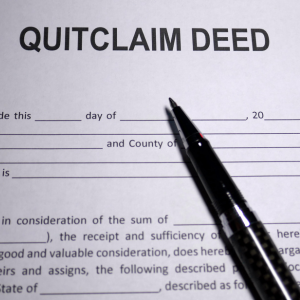
Understanding the broader implications of using a quitclaim deed in Minnesota is essential, including tax effects, property ownership impact, and legal restrictions.
What are the tax implications of transferring property?
Using a quitclaim deed to transfer property in Minnesota may have tax implications:
- Gift Tax: Transfers considered gifts may fall under federal gift tax rules.
- Property Tax Adjustments: The property might be reassessed, affecting property taxes.
- State Recording Fee: Filing the deed may include state or local fees.
A tax professional can help clarify all tax obligations related to quitclaim deeds.
How does a quitclaim deed affect property ownership rights?
A quitclaim deed transfers the grantor’s interest without warranties, which means:
- No Guarantee: The grantee receives whatever interest the grantor has, with no title assurance.
- Potential Liens: Existing liens or claims remain unless addressed before transfer.
Conducting a title search is advisable before accepting a quitclaim deed to uncover potential issues.
Are there any restrictions on using a quitclaim deed in Minnesota?
There are specific restrictions on quitclaim deeds in Minnesota:
- Non-Warranty Nature: It offers no guarantees regarding the property’s title status.
- Limitations with Lenders: Some lenders may not accept it for refinancing.
- Estate Planning Limitations: Using it in estate planning can have unwanted effects, especially with inheritance laws.
Consulting an expert in Minnesota real estate law is recommended to handle these restrictions effectively.
For more information about quitclaim deeds and their implications, Henry Home Buyer offers resources and expert insights.
Understanding Differences: Quitclaim vs Warranty Deed
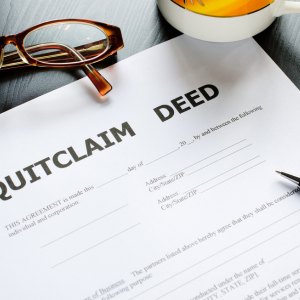
A quitclaim deed and a warranty deed are both tools for real estate transactions, but they have different functions. In Minnesota, it’s important for buyers and sellers to know the differences between these deeds.
How does a quitclaim deed differ from a warranty deed in Minnesota?
In Minnesota, a quitclaim deed transfers any interest the grantor may have in a property without guarantees. The grantor makes no promise about the title’s validity or freedom from encumbrances. Meanwhile, a warranty deed offers the grantee more protection. It assures that the grantor holds a clear title and will defend against future claims.
When comparing a quit claim deed vs a warranty deed in Minnesota, consider the level of risk you’re willing to accept. A quitclaim deed might be enough for simple transactions, like those among family members. More official dealings often require a warranty deed.
When should you opt for a quitclaim deed over other types of deeds?
In Minnesota, using a quitclaim deed is suitable for situations such as:
- Transferring property between relatives.
- Settling ownership in divorce cases.
- Solving heirship questions or minor title issues.
To carry out a Minnesota real estate deed transfer with a quitclaim deed, follow the specific steps in Minnesota to ensure proper execution.
Legal Aspects of Minnesota Quitclaim Deeds
Due to their less secure nature compared to warranty deeds, obtaining legal counsel is advisable when dealing with quitclaim deeds in Minnesota.
What legal challenges can arise with quitclaim deeds?
Potential legal challenges with quitclaim deeds include:
- Disputes over undisclosed liens or claims.
- Issues from unclear conveyance documentation.
- Problems meeting quit claim deed requirements in Minnesota, like notarization or accurate filing.
Knowing Minnesota conveyance laws can help avoid these challenges.
How can legal advice assist in managing quitclaim deed transactions?
Consulting with legal counsel is beneficial for:
- Reviewing the quitclaim deed for Minnesota law compliance.
- Guiding on the effects of transferring property without warranties.
- Assisting with creating and reviewing Minnesota legal forms for quit claim deed transactions.
What Minnesota statutes govern quitclaim deeds?
Minnesota statutes provide rules for executing and recording quitclaim deeds. These laws cover necessary steps, such as following Minnesota document recording rules and detailing accurate property descriptions.
Recording a Minnesota Quitclaim Deed
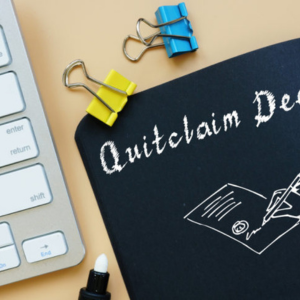
Recording a quitclaim deed correctly in Minnesota is vital to defend your rights and interests.
What is the process for recording a quitclaim deed?
The recording process includes:
- Accurately completing the quitclaim deed form with correct property details and signatures.
- Notarizing the document for authenticity.
- Submitting it to the county recorder’s office with relevant Minnesota deed filing fees.
- Filing the Minnesota deed transfer form, if needed.
Why is recording a quitclaim deed important?
Recording a quitclaim deed matters because of it:
- Publicly announces the property transfer, recognizing the new owner’s rights.
- Guards against future claims and strengthens the validity of the quit claim deed in Minnesota.
- Fulfills Minnesota deed recording requirements and maintains the chain of title.
For reliable assistance with real estate transactions, the services of Henry Home Buyer can provide focused guidance.
Ensuring Compliance with Minnesota Real Estate Laws
To comply with Minnesota real estate laws, understanding the state’s regulations and legal requirements for deeds and property transfers is necessary. Here are the steps to follow:
- Consult an Attorney: Before you start any property transfer, talk to an attorney experienced in Minnesota real estate law. They can guide you through state-specific regulations and address potential legal issues.
- Understand Deed Types: Learn about the different types of deeds in Minnesota, such as quitclaim deeds. Knowing the implications and limitations of each type is key for legal compliance.
- Review State Regulations: Regularly review Minnesota real estate regulations and stay updated on changes to property transfer requirements. This keeps you aligned with legal standards and reduces non-compliance risk.
- Accurate Documentation: Make sure all documents related to property transfers, like deeds and forms, are filled out accurately and filed according to Minnesota’s legal guidelines.
- Compliance Checklists: Use compliance checklists to ensure that all legal requirements are met during the property transfer process.
Utilizing Online Resources for Quitclaim Deeds
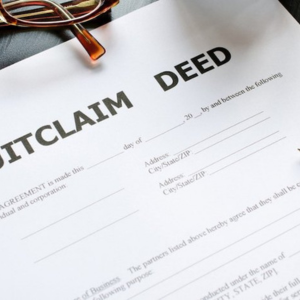
Online resources can be very helpful for handling quitclaim deeds in Minnesota. Here’s how you can use these resources effectively:
- Access Templates: Many online platforms offer templates for Minnesota quitclaim deeds. These templates simplify document preparation and help ensure accuracy.
- Gather Information: Visit reputable websites to learn about the quitclaim deed filing process in Minnesota. This includes finding out what documentation is needed and getting legal advice.
- Legal Consultation: Online legal consultation services can offer additional support and advice regarding Minnesota real estate forms and the legal context of quitclaim deeds.
- Filing Process Guidance: Follow step-by-step guides and videos online to efficiently navigate the quitclaim deed filing process.
- Stay Updated: Subscribe to newsletters or alerts from Minnesota real estate legal resources to stay informed about changes in regulations affecting quitclaim deeds and other property transactions.
Effective Strategies for Successful Quitclaim Transactions
For successful quitclaim transactions in Minnesota, use these strategies:
- Precise Documentation: Ensure the quitclaim deed has accurate information, including property descriptions and grantor details, to avoid disputes and legal issues.
- Risk Assessment: Conduct a risk assessment before proceeding with a quitclaim transaction to understand potential risks and reduce liabilities.
- Engage Legal Counsel: Consult a legal professional to evaluate your quitclaim transaction. This helps identify and address potential legal pitfalls.
- Thorough Due Diligence: Verify the validity of the property title and assess any encumbrances that might impact the transaction.
- Regular Communication: Keep open communication with all parties involved in the transaction to ensure transparency and prevent misunderstandings.
By following these strategies, you can increase the chances of a smooth and successful quitclaim deed transaction while minimizing risks.
Disclaimer: This content provides general information and should not be considered legal advice. For personalized legal assistance, consult a qualified attorney specializing in Minnesota real estate law.
Exploring Alternatives to Quitclaim Deeds in Minnesota

When transferring property in Minnesota, it’s key to explore options beyond quitclaim deeds. Knowing these choices helps you make smart decisions about real estate and stay within Minnesota real estate law.
What are alternative methods to transfer property ownership?
In Minnesota, there are several ways to transfer property ownership:
- Warranty Deed: Guarantees that the seller owns the property and can legally transfer it.
- Special Warranty Deed: Offers protection for the time the seller owned the title.
- Bargain and Sale Deed: Suggests the seller holds the title but doesn’t promise it’s free of encumbrances.
- Transfer on Death Deed: Let property go directly to beneficiaries when the owner dies, skipping probate.
These legal options provide different levels of protection and can fit various situations in Minnesota real estate.
When should you consider alternatives to a quitclaim deed?
You might want alternatives to a quitclaim deed when:
- You Need More Assurance: Choose a warranty deed for better title assurance.
- Legal Advice is Sought: A real estate attorney can help decide the best ownership transfer method.
- Complex Transactions: If mortgages or unfamiliar parties are involved, other options might be safer.
Post-Filing Considerations for Property Transfer
After you file a quitclaim deed, take these steps to ensure a smooth property transfer:
- Title Insurance: Secure title insurance to protect against title defects.
- Mortgage Notification: Let your lender know if there’s a change in ownership.
- Ownership Registration: Update the records with the local county recorder to show the new ownership.
What actions follow the filing of a quitclaim deed?
After filing a quitclaim deed, you should:
- Verify Ownership: Make sure the deed is properly recorded in Minnesota.
- Update Title: Ensure the title reflects the new ownership correctly.
- Notify Relevant Parties: Inform mortgage lenders or homeowner associations about the ownership change.
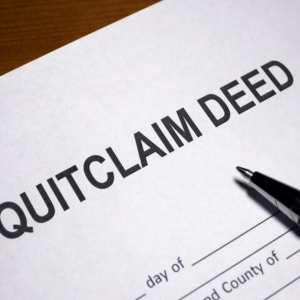
How does a quitclaim filing impact mortgage and title insurance?
A quitclaim deed can affect your mortgage and title insurance:
- Lender Requirements: Check if the lender needs changes due to ownership change.
- Title Insurance Coverage: Confirm the policy is still covered under the new ownership.
What should new property owners do after receiving a quitclaim?
New property owners should:
- Confirm Ownership: Check all documents to verify the transfer was made correctly.
- Assess Property Taxes: Know your tax duties in Minnesota to comply with state laws.
- Secure Title Confirmation: Verify that title changes are recorded by the authorities properly.
Contacting Professionals for Quitclaim Deed Assistance
Getting professional help with quitclaim deeds is wise. You might contact:
- Real Estate Attorneys: Specialists in Minnesota real estate law can offer valuable advice.
- Property Transaction Experts: Get experienced professionals to simplify the process and answer legal questions.
Who can provide professional assistance with quitclaim deeds?
In Minnesota, these professionals can assist with quitclaim deeds:
- Real Estate Attorneys: They offer legal counsel on property transactions.
- Legal Counsel Services: Connect with attorneys who specialize in property transfer.
How can you find a qualified real estate attorney in Minnesota?
To find a good real estate attorney in Minnesota, try these steps:
- Research Online: Use directories or legal websites to find attorneys who focus on property law.
- Seek Referrals: Get recommendations from trusted sources who know Minnesota real estate.
For thorough property transaction advice, Henry Home Buyer suggests working with experienced professionals to handle Minnesota real estate laws effectively.
FAQs:
How do I file a quit claim deed form in Minnesota?
To file a quit claim deed in Minnesota, get the correct form, fill it out with exact property details, and submit it to the county recorder’s office where the property is located. Make sure all parties sign in front of a notary public.
What are the requirements for a valid quit claim deed in Minnesota?
A valid Minnesota quit claim deed needs a completed form with the names of the grantor and grantee, a legal description of the property, and notarized signatures. Ensure it complies with Minnesota’s real estate laws to avoid mistakes.
Where can I find Minnesota quit claim deed forms online?
You can find Minnesota quit claim deed forms on government websites or get them from local county offices. Legal assistance sites also offer downloadable forms and guidance.
Are there tax implications when filing a quit claim deed in Minnesota?
Yes, transferring property via a quit claim deed might have tax implications. Consult a tax expert or attorney to understand potential capital gains taxes or property tax changes related to your transfer.
What should I do if I encounter errors on my Minnesota quit claim deed?
If you find errors on your quit claim deed, consult a real estate legal expert right away. Corrections can often be made through an amended deed, which must also be notarized and recorded.
Can I file a Minnesota quit claim deed myself, or do I need an attorney?
You can file a quit claim deed yourself, but consulting with a real estate attorney ensures compliance with Minnesota law and prevents potential legal issues.
What is the procedure for recording a real estate transfer in Minnesota?
After completing your quit claim deed, record it at the local county recorder’s office. Recording fees apply, and you must provide necessary supporting documents, like proof of identity.
How can I reach out to Minnesota county offices for assistance with quit claim deeds?
Contact details for Minnesota county offices are available on their government websites. These offices typically provide guidance on document submission and recording procedures.
Key Insights
- To file a quit claim deed in Minnesota, ensure you have the right claim form and understand the necessary quit claim deed requirements. Use specific Minnesota forms for this process.
- Visit the Minnesota government website for deeds for accurate details on filing an MN quitclaim deed or MN quit claim deed online. Follow their checklist to complete all steps properly.
- To record real estate transactions, you must know how to file real estate documents correctly. Identify the correct document form to use and complete it accurately.
- Seek Minnesota real estate legal help for complex matters like a deed of trust or understanding the tax implications of a quit claim deed.
- If you’re a homeowner in Ramsey County or need expert advice, consult with real estate agents or professionals specializing in real estate in Minnesota.
- For easement issues or clarifications on the right to property, professional guidance is recommended.
- Use a Minnesota quit claim deed checklist to streamline your process, ensuring validity and proper registration with authorities.
- Understand related terms like conveyancing and contracts for deeds to manage real estate transactions effectively.
- Address Minnesota quit claim deed procedure queries by seeking expert insights and guides.
- Review sample documents and consider how processes may differ across states, such as North Carolina and South Carolina.
This information applies to Minnesota and its cities, including St. Paul, Minnetonka, Eden Prairie, Plymouth, and more. For more details, please call us at (612) 430-8822 or visit our website at Henry Home Buyer.
More Resources To Help You Sell in Minnesota


